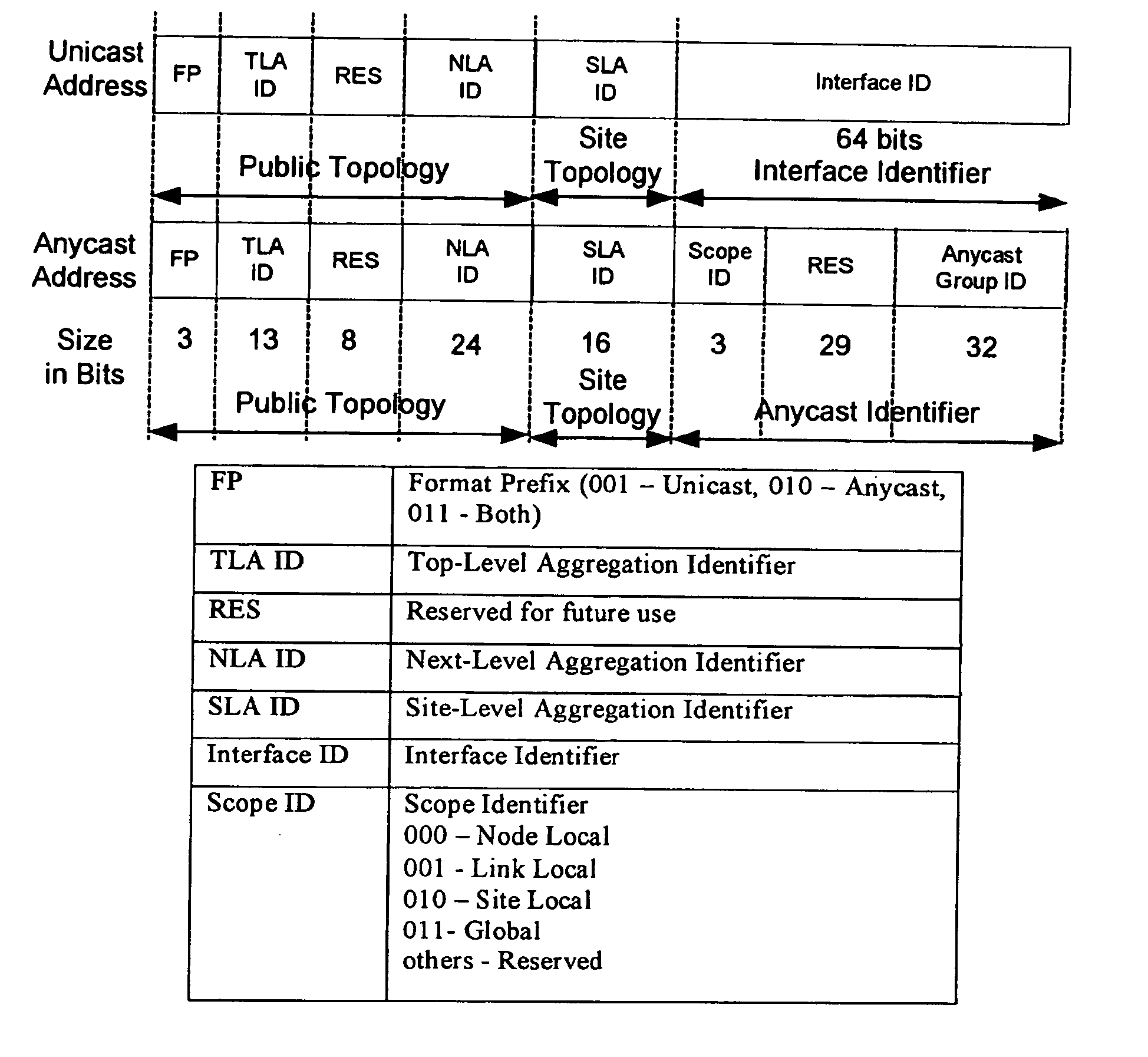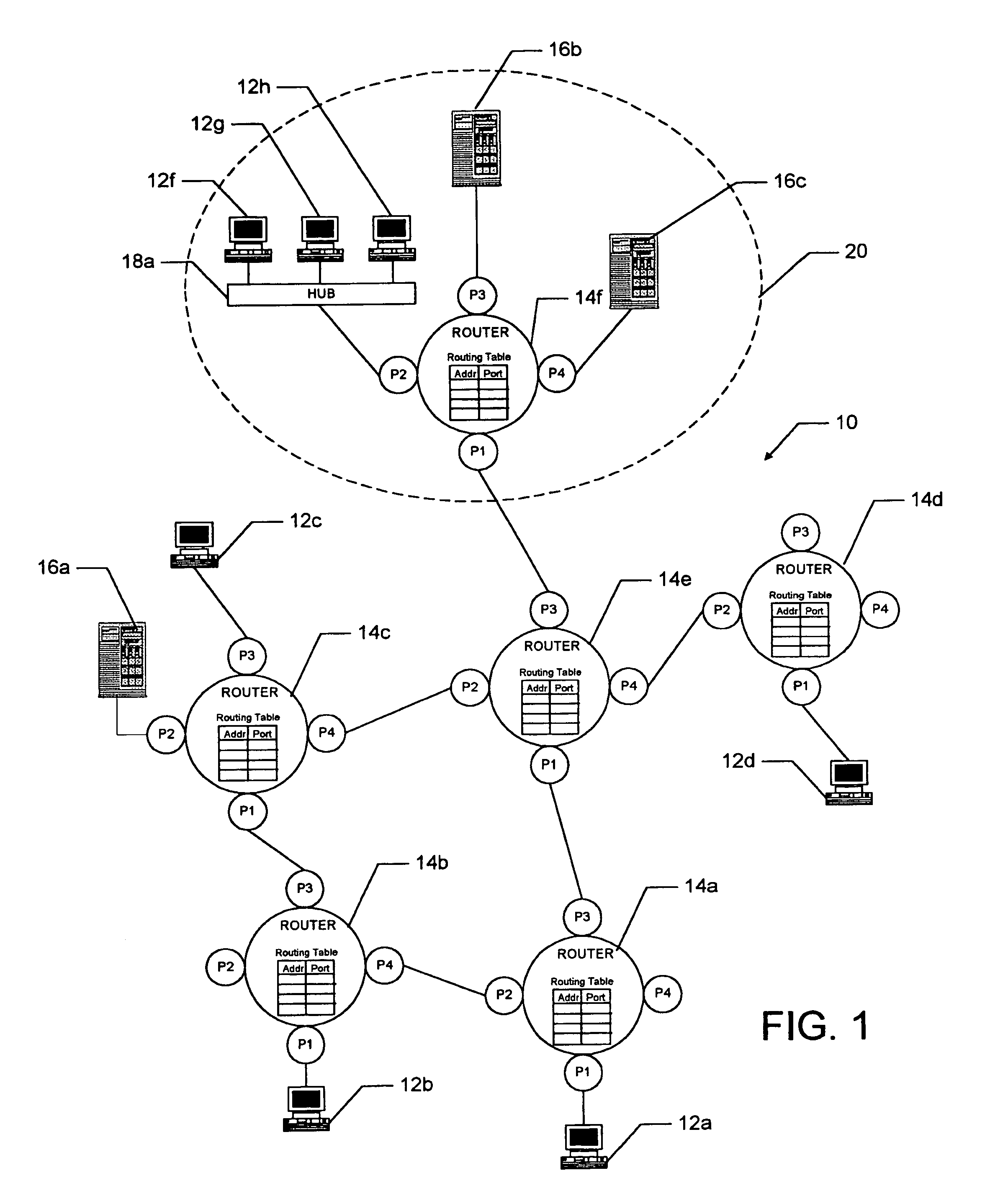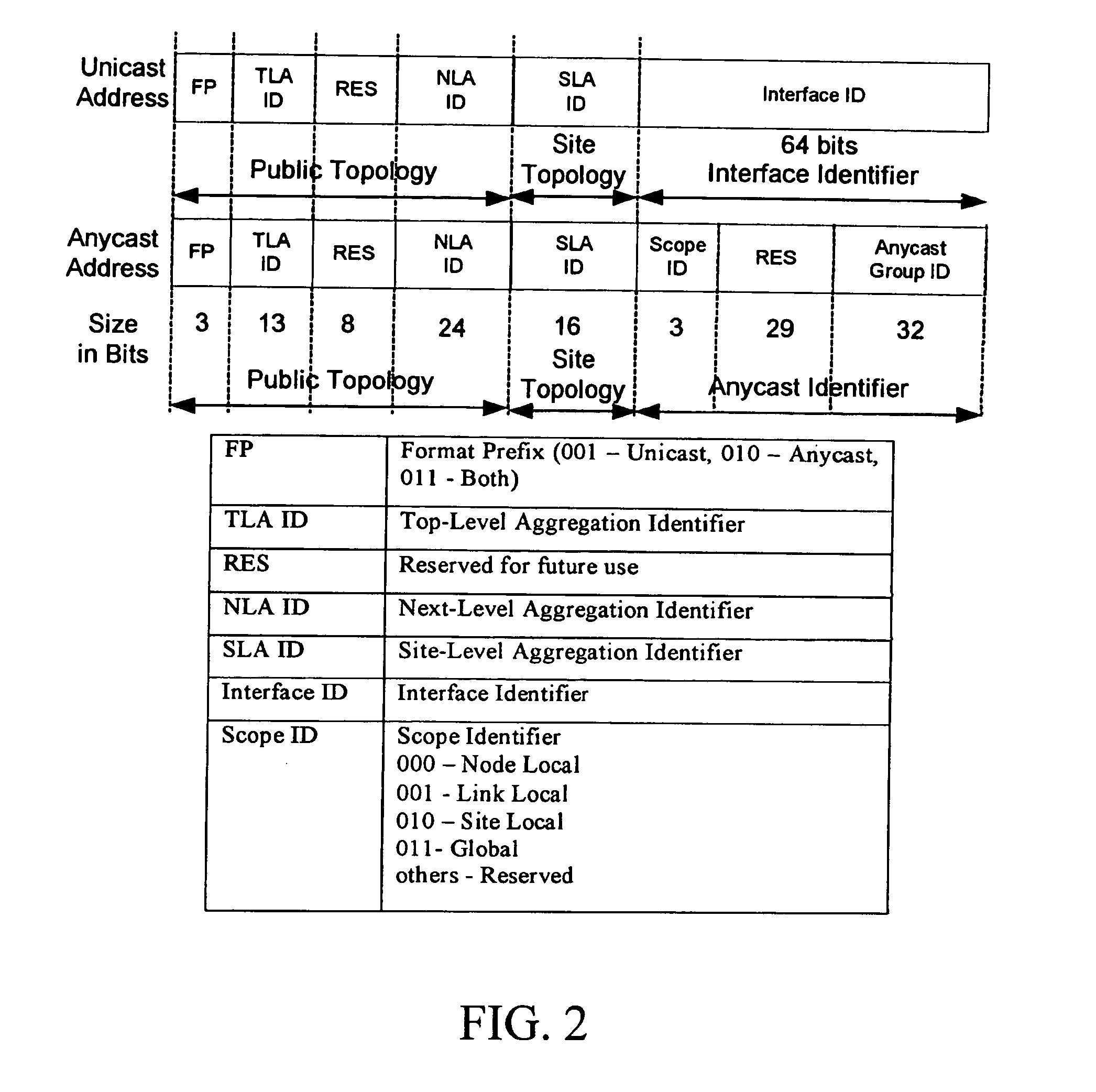Anycast addressing for internet protocol version six
a technology of internet protocol and anycast address, applied in the field of network addressing, can solve the problems of unresolved functional problems of anycast address, no guarantee that the second network packet will be received by the same server, and the specific bit-level structure of anycast address itself has not yet been defined
- Summary
- Abstract
- Description
- Claims
- Application Information
AI Technical Summary
Problems solved by technology
Method used
Image
Examples
Embodiment Construction
[0020] Referring to FIG. 1, an exemplary network 10 includes a plurality of host computers 12a-12h, for example, personal computers, interconnected via a plurality of routers 14a-14f. The network 10 can also include servers 16a-16c also coupled to the network, which can be, for example, web servers, application servers, or database servers. Each router has two or more ports, here shown as four ports P1-P4 associated with each router 14a-14f.
[0021] As is known, network communications include network packets containing network datagrams, each having a source address, a destination address, and user data. For IPv4, the source and destination addresses are each thirty-two bits long, and for IPv6, the source and destination addresses are each 128 bits long. The network packets travel along the network 10.
[0022] Taking the router 14a as representative of each of the routers 14a-14f, the router 14a has four ports P1-P4, which provide input / output connectivity to the network 10. The route...
PUM
 Login to View More
Login to View More Abstract
Description
Claims
Application Information
 Login to View More
Login to View More - R&D
- Intellectual Property
- Life Sciences
- Materials
- Tech Scout
- Unparalleled Data Quality
- Higher Quality Content
- 60% Fewer Hallucinations
Browse by: Latest US Patents, China's latest patents, Technical Efficacy Thesaurus, Application Domain, Technology Topic, Popular Technical Reports.
© 2025 PatSnap. All rights reserved.Legal|Privacy policy|Modern Slavery Act Transparency Statement|Sitemap|About US| Contact US: help@patsnap.com



